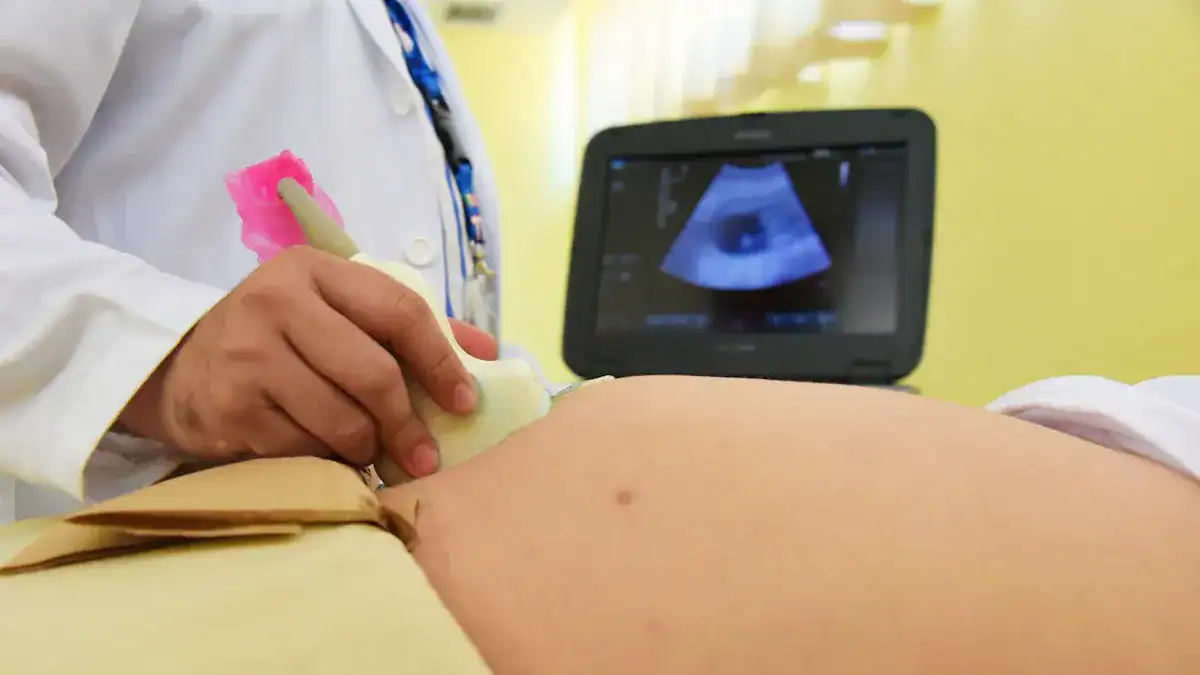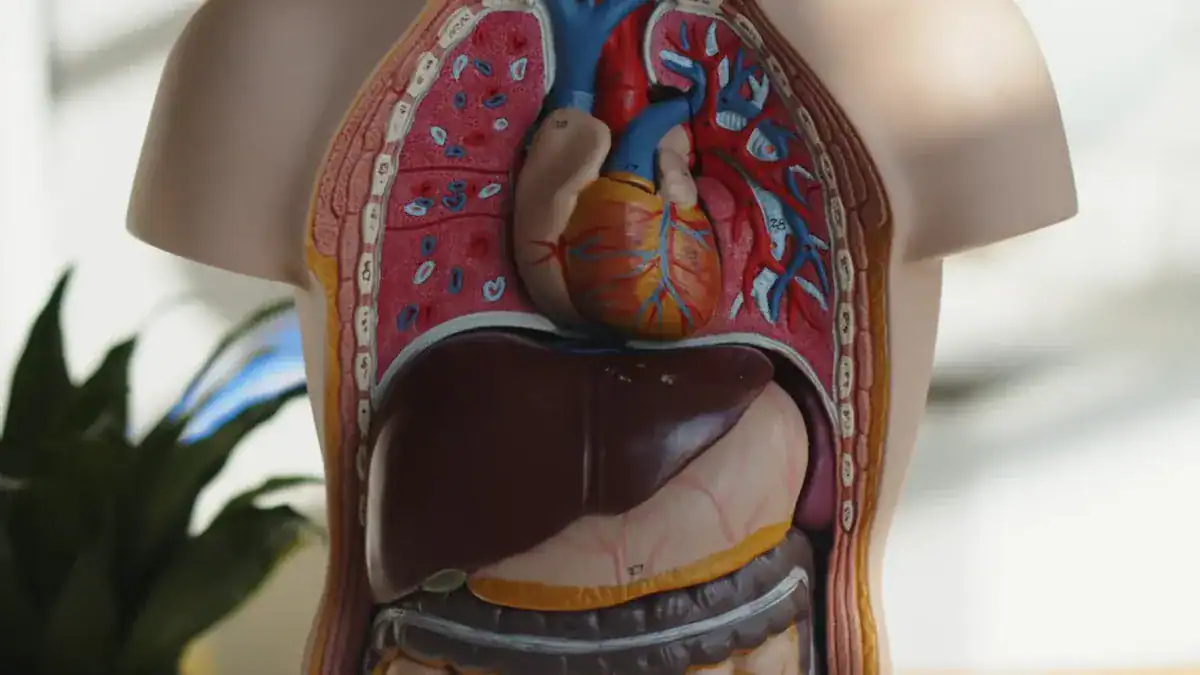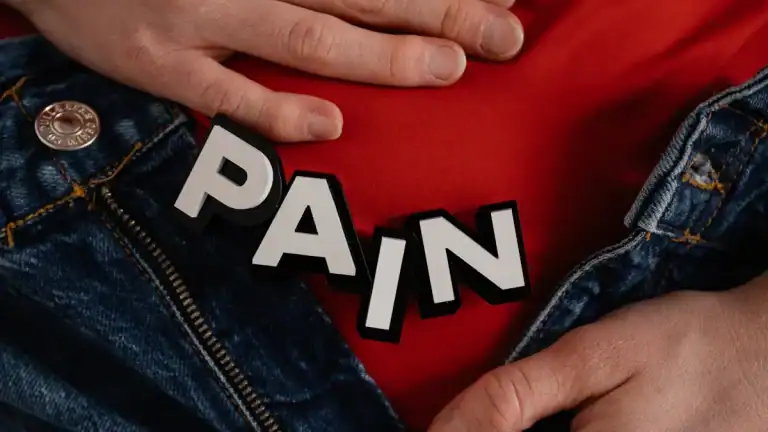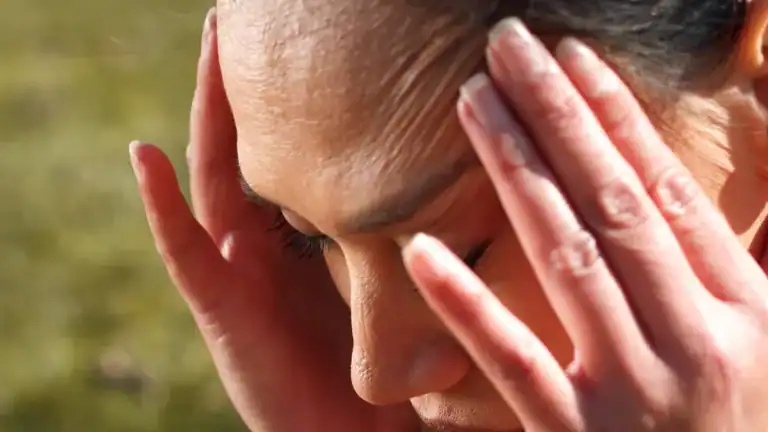
You might experience abdominal pain often. However, you must distinguish between minor discomfort and symptoms needing urgent medical attention, especially when the pain is on your right side. Abdominal pain accounts for 7–10% of all Emergency Department visits annually. While many causes are benign, some can be life-threatening. They necessitate prompt diagnosis and treatment. This blog guides you in understanding potential causes. It also shows you when to seek immediate medical help for right-sided abdominal pain. Your prompt action can ensure proper care. Seek urgent care if you have severe pain. This ensures an urgent diagnosis.
Key Takeaways
Right-sided abdominal pain can be serious. Watch for sudden, severe pain or pain that does not go away.
Red flag symptoms like fever, vomiting, or pain that moves need urgent medical help. These can mean serious problems.
Conditions like appendicitis, gallstones, kidney stones, and ectopic pregnancy cause severe right-sided pain. They need quick diagnosis and treatment.
Always seek immediate medical care for severe or concerning right-sided abdominal pain. Do not wait for symptoms to get worse.
When Right-Side Abdominal Pain Requires Urgent Diagnosis
You must understand when right-sided abdominal pain signals an urgent health need. Not all abdominal pain is the same. Some types demand immediate medical attention. Recognizing these critical signs helps you get the care you need quickly. An urgent diagnosis can prevent serious complications.
Red Flag Symptoms
You should watch for specific symptoms. These symptoms indicate a need for urgent care. If you experience pain that is sudden, severe, or does not ease within 30 minutes, seek help. Continuous, severe abdominal pain, especially with continuous vomiting, is a red flag. You might have sharp, persistent pain, nausea, vomiting, loss of appetite, or fever.
These symptoms often suggest appendicitis. This condition requires urgent surgical removal. If you have severe abdominal pain combined with vaginal bleeding, you could have an ectopic pregnancy. This is an emergency. Upper right abdominal pain that is sharp, cramping, or persistent, with back pain radiating to your shoulder blades, nausea, vomiting, and indigestion after fatty foods, points to gallstones. These also need prompt medical evaluation. Dark or tarry stools, sometimes with blood, can signal stomach ulcers. Sharp, severe stomach pain, typically in your back or side, that comes and goes in waves, changes in urination, nausea, vomiting, or fever, suggests kidney issues. Infections need urgent treatment. A sudden onset of stomach pain always warrants attention.
Immediate Medical Attention
You must seek urgent care or visit the emergency room if you experience any of these red flag symptoms. Any new-onset abdominal pain that is severe requires a doctor’s visit. This helps rule out urgent issues like appendicitis, ectopic pregnancy, ulcers, or kidney stones. Do not delay seeking care. Your prompt action ensures an urgent diagnosis and appropriate treatment. Going to the emergency room quickly can make a big difference in your health outcome. You need to prioritize your care when these urgent signs appear.
Upper Right Abdominal Pain: Urgent Concerns

You can experience severe pain in your upper right abdominal area. This signals serious health issues. These conditions often need urgent care. You must understand these concerns. This helps you get prompt medical care.
Gallbladder Issues
Your gallbladder sits under your liver. It stores bile. Problems with your gallbladder can cause significant pain. Acute cholecystitis is inflammation of your gallbladder. Gallstones can block the bile duct. This causes this inflammation. You might feel sharp, cramping pain in your upper right abdominal area. This pain can spread to your back or right shoulder blade. You might also have nausea, vomiting, and indigestion, especially after eating fatty foods.
Acute cholecystitis affects many people. Doctors diagnose it in about 200,000 individuals in the United States each year. In some cases, 5% to 10% of these are acalculous cholecystitis. This means your gallbladder inflames without gallstones. This often happens in very sick patients.
When you have acute cholecystitis, your body shows specific signs.
You will likely have more white blood cells (leukocytosis).
Your C-reactive protein levels will be high.
Your bilirubin and liver enzyme levels might also be high. This can mean you have gallstones in your bile duct or another infection.
Doctors will also check to rule out acute hepatitis.
These symptoms mean you need urgent care.
Liver Conditions
Your liver is a large organ in your upper right abdominal area. It performs many vital functions. Conditions affecting your liver can cause severe pain.
Hepatitis is inflammation of your liver. Viruses are the most common cause of hepatitis. Other causes include toxins like alcohol or certain drugs. Your immune system can also attack your liver, causing autoimmune hepatitis.
Symptoms of hepatitis include:
Diarrhea
Fatigue
A general feeling of illness
Fever (if viral)
Nausea or loss of appetite
Pain on the right side of your upper abdominal area.
Acute viral hepatitis often causes poor appetite, nausea, vomiting, fever, and pain in your upper right stomach area. Hepatitis A and B are common causes. Other viruses, like Epstein-Barr, can also cause it.
A liver abscess is another serious liver condition. This is a pus-filled pocket in your liver. Doctors use several tests to diagnose a liver abscess:
Blood tests: These include a complete blood count. They check for anemia or high white blood cells. Liver function tests show if your liver is working well.
Blood cultures: Doctors take blood samples to check for bacteria. These are positive in about half of cases.
Imaging scans:
Ultrasound: This is often the first test. It is easy to use and not expensive. It shows masses in your liver.
CT scan: This scan is very sensitive. It can find small lesions. It helps doctors see other problems in your abdomen.
MRI: Doctors use this for specific patients, like pregnant women.
You need urgent care if you have these liver symptoms.
Pancreatitis
Your pancreas is a gland behind your stomach. It helps with digestion and blood sugar control. Pancreatitis is inflammation of your pancreas. This condition causes severe pain. This pain often starts in your upper abdominal area. It can spread to your back.
Several factors can cause acute pancreatitis:
Risk factors for acute pancreatitis | Assumed pathomechanism |
|---|---|
Alcohol abuse | dose-dependent cell injury |
Smoking | dose-dependent cell toxicity |
Gallstones | pancreatic duct obstruction |
Hypertriglycerides | blood viscosity, local tissue ischemia |
Endoscopic procedures (ERCP) | cell injury, increased duct pressure |
Abdominal trauma | pancreatic tissue damage |
Drugs | cell toxic or metabolic effects |
Autoimmune diseases | immune cell infiltration |
Dominant PRSS1 mutations | elevated trypsin activity |
Predisposing genetic mutations | protease activation, ER stress |
Infections | direct tissue injury |
Gallstones and alcohol abuse are the most common causes. They account for 30–50% of cases. Gallstones can block the pancreatic duct. This increases pressure and damages cells. Alcohol use can also trigger pancreatitis. High triglycerides (fats in your blood) cause about 10% of cases. Very high triglyceride levels can make your blood thick. This leads to tissue damage.
Acute pancreatitis causes constant, severe pain. This pain lasts for days. It does not get better if you change position or rest. This type of pain needs urgent medical attention. You need an urgent diagnosis to prevent serious complications.
Lower Right Abdominal Pain: Critical Conditions

You might experience lower right abdominal pain. This can signal several critical health issues. These conditions often require immediate medical attention. Understanding these potential causes helps you act quickly. Prompt care can prevent serious complications.
Acute Appendicitis
You might feel lower right abdominal pain due to appendicitis. This is an inflammation of your appendix. It is a serious condition. The incidence of appendicitis in the general population is approximately 233 per 100,000 people per year. Your lifetime risk ranges from 6.7% to 8.6%. Globally, the age-standardized incidence rate was 229.9 per 100,000 population in 2019. This marked a 20.5% increase from 190.7 per 100,000 population in 1990. The incidence rate was highest in the 15- to 19-year age group for both males and females in 2019.
You will typically experience abdominal pain as the primary complaint. Nausea, vomiting, and loss of appetite are also common. The pain often starts around your belly button. It may come and go. Then, it intensifies with nausea and vomiting. Later, the nausea subsides. The pain shifts to your lower right abdominal pain, becoming more focused and worsening. Other possible symptoms include:
Fever (up to 40% of cases)
General malaise
A swollen or bloated belly (often an advanced sign)
Increased urinary frequency or urgency
Bowel paralysis (leading to constipation or inability to pass gas)
Diarrhea
Doctors look for specific signs during an examination. These include:
McBurney’s sign: Tenderness at McBurney’s point, located about two inches from the ASIS towards the belly button on the right side.
Blumberg’s sign: Rebound tenderness, where pain worsens when pressure is released from the sore area.
Dunphy’s sign: Increased pain when coughing.
Rovsing’s sign: Pain in the lower right side when pressure is applied to the lower left side.
Psoas sign: Pain when extending or rotating the right hip outward. This often indicates irritation of the psoas muscle if the appendicitis is behind the colon.
Localized tenderness and muscular rigidity are observed in your right iliac fossa after the pain has localized there. Laboratory tests usually show an elevated white blood cell count (leukocytosis) with a left shift. C-reactive protein levels are often elevated. You need urgent care if you suspect appendicitis. This is an emergency.
Kidney Stones
You might experience severe lower right abdominal pain from kidney stones. These are hard deposits that form in your kidneys. They can cause excruciating pain. This pain can be intermittent or ongoing. Other significant symptoms include:
Severe pain: This pain prevents finding a comfortable position. It often occurs in your lower back, flank, or groin. It can come in waves, be stabbing or throbbing. It lasts from 20 minutes to over an hour. You typically experience this pain when a stone 3mm or larger blocks your ureter.
Nausea and vomiting: This occurs due to the severity of the pain.
Fever and chills: These often indicate an infection.
Blood in the urine (hematuria): This suggests the stone has started to pass. It may be lodged in your ureter, potentially causing tears.
Difficult and painful urination: This can result from a blockage in your ureter. It can also happen if the stone is in your urethra. This can lead to infection if urine cannot pass.
Typical kidney stone symptoms include:
Sharp pain in your lower abdominal area, usually on one side.
A burning sensation or pain during urination.
Frequent urination.
Feeling of incomplete or small amount urination.
Urine that is brown, red, or pink, indicating blood.
Smelly or cloudy urine.
Nausea or queasiness due to intense pain.
Signs of infection, such as fever, chills, and vomiting.
The sharp pain associated with kidney stones typically moves as the stone progresses through your urinary tract. Common pain locations include your lower abdominal area or groin, along one side of your body below your ribs, or your lower back. The pain usually isn’t felt until the stone has formed and is passing through your urinary tract. The intensity of pain can vary. It does not always correlate with the stone’s problematic nature. Pain can also be sporadic, coming and going. It may be caused by the stone moving through your ureter or blocking urine flow. This leads to pressure buildup and swelling. Pain may subside once the stone reaches your bladder. However, it can reignite as it passes through your urethra.
Noncontrast CT of your abdominal area and pelvis consistently provides the most accurate diagnosis for kidney stones. Its sensitivity for detecting kidney stones is the highest among all available modalities, estimated at approximately 95%. Its specificity is around 98% when you present with acute flank pain suggestive of an obstructing stone. Almost all stones can be visualized using CT. Few large stones are missed, though small stones (<3 mm) might occasionally be undetected.
Imaging Modality | Sensitivity (%) | Specificity (%) | Radiation Exposure (mSv) | Cost Multiple (relative to KUB) |
|---|---|---|---|---|
CT | 95 | 98 | 10.0 | 10 |
Low-dose CT | 95 | 97 | ~3.0 | 10 |
Ultrasonography | 84 | 53 | None | 5 |
KUB | 57 | 76 | 0.7 | 1 |
MRI | 82 | 98 | None | 30 |

You need urgent care for kidney stone symptoms.
Bowel Obstruction
You can experience lower right abdominal pain from a bowel obstruction. This happens when something blocks your small or large intestine. This blockage prevents food, fluid, and gas from passing through. This is an emergency. Common causes in adults include:
Mechanical Obstruction: This is the most common cause. It includes adhesions (scar tissue after surgery), hernias, tumors, or impacted feces. Adhesions are particularly common after abdominal surgeries.
Intussusception: One segment of your intestine folds into another. While more common in children, it can also affect adults.
Volvulus: A segment of your intestine twists around itself. This leads to a partial or complete blockage. This is more common in the elderly.
Strictures: These are narrowed areas of your intestine. They often result from inflammation from conditions like Crohn’s disease.
Tumors: Both benign and malignant tumors can grow in your intestines. They cause a blockage. These can be primary or secondary (metastatic).
Foreign Objects: Ingesting foreign objects can lead to obstruction. This is especially noted in children.
Other causes include:
Adhesions: Scar tissue that can build up and cause narrowing in your bowel.
Hernias
Cancer: Tumors can cause obstructions, especially in your large bowel. About 40% of colon cancer diagnoses are prompted by obstruction symptoms.
Diverticulitis: Inflammation of small pockets in your colon (diverticula) can cause narrowing and scarring.
Radiation therapy to your abdomen, pelvis or rectum: This can cause scarring (radiation enteritis) leading to strictures.
You need urgent care if you suspect a bowel obstruction.
Hernia
You might develop a hernia. This occurs when an organ pushes through an opening in the muscle or tissue that holds it in place. An incarcerated hernia is a serious type. This happens when the tissue becomes trapped and cannot be pushed back into place. This can lead to lower right abdominal pain. You might notice a lump or bulge in your abdominal area or groin that does not go away. Other symptoms include:
Distended abdominal area.
Nausea or vomiting.
Severe pain in your lower right abdominal pain or groin.
Redness of the skin overlying the hernia.
Swelling at the site of the incarcerated hernia that is tender to the touch.
Inability to pass stool due to bowel obstruction.
If you experience these symptoms, you need urgent care. This is an emergency.
Ectopic Pregnancy
You can experience lower right abdominal pain from an ectopic pregnancy. This happens when a fertilized egg implants outside your uterus, usually in a fallopian tube. This is a life-threatening condition. It requires immediate medical attention. Women who died from ectopic pregnancy were more likely to have collapsed due to hemorrhage before seeking medical care. This suggests that ruptured ectopic pregnancy contributes significantly to overall ectopic pregnancy mortality.
Key diagnostic indicators for ectopic pregnancy include:
Serum β-HCG levels: Serial measurements are crucial. A slower-than-expected increase or a decrease compared to a normal doubling time (every 48-72 hours) suggests an ectopic pregnancy. The absence of an intrauterine pregnancy when β-HCG levels are above the discriminatory zone (1500-1800 mIU/mL for transvaginal ultrasonography, 6000-6500 mIU/mL for abdominal ultrasonography) is a strong indicator.
Ultrasonography: This is a primary tool for diagnosis. Transvaginal ultrasonography can visualize an intrauterine pregnancy earlier than transabdominal. An empty uterus on endovaginal ultrasonography with β-HCG levels above the discriminatory cut-off strongly indicates an ectopic pregnancy. Color-flow Doppler ultrasonography can enhance diagnostic sensitivity.
Laparoscopy: While considered the criterion standard for diagnosis, it is typically reserved for specific cases. These include patients experiencing pain or hemodynamic instability. This is due to associated risks and costs. It can also miss a small percentage of early ectopic pregnancy.
You need urgent care if you suspect an ectopic pregnancy.
Ovarian Torsion
You might experience lower right abdominal pain from ovarian torsion. This happens when an ovary twists around its ligaments. This cuts off its blood supply. This is a medical emergency. Symptoms typically arise suddenly and intensely. These include severe pain in your pelvic region, along with nausea and vomiting. This sudden pain can sometimes be preceded by occasional cramps over several days or weeks. This often happens due to the ovary twisting and untwisting repeatedly.
Classic presentation includes:
Sudden onset of severe, unilateral, lower right abdominal pain (in 90% of cases).
Accompanying symptoms: Nausea and vomiting.
Patient demographics: Typically affects women of reproductive age.
Risk factors: Presence of an ovarian mass or prior ovarian torsion.
Examination findings: Unilateral tenderness on abdominal examination. Late systemic findings like pyrexia, tachycardia, and hypotension may indicate ovarian necrosis. Signs of frank peritonism suggest infarction or peritonitis.
Other symptoms include:
Pain: Sudden onset, unilateral lower abdominal, often stabbing. It may radiate to your groin. Approximately 40% of patients report gradual pain. Some may experience back or flank pain. Intermittent pain over hours, days, or weeks can occur with repeated torsion.
Associated Symptoms: Commonly accompanied by nausea and vomiting.
Fever: Uncommon, and usually low-grade if present.
Risk Factors: History of ovarian cyst/mass, prior ovarian torsion, or current pregnancy increase suspicion.
In Infants/Children: Consider with feeding intolerance, abdominal distension, vomiting, irritability, and/or a palpable pelvic mass.
Physical Examination: May reveal pelvic or lower right abdominal pain tenderness, adnexal tenderness, or an adnexal mass. Peritoneal signs suggest ovarian necrosis.
You need urgent care for suspected ovarian torsion.
Testicular Torsion
You might experience severe pain in your scrotum from testicular torsion. This happens when a testicle twists on its spermatic cord. This cuts off its blood supply. This is a medical emergency. Prompt restoration of blood flow to the ischemic testicle is critical. You need prompt referral to a urologist. Emergent surgical treatment is indicated despite many patients presenting beyond the four- to eight-hour time frame. The viability of the testicle is difficult to predict.
Time Window (hours) | Testicular Salvage Rate (%) |
|---|---|
0-6 | 90-100 |
>12 | 50 |
>=24 | <10 |
4-8 | Significant ischemic damage occurs |
8.5 | Threshold for predicting non-salvage |
You need urgent care immediately if you suspect testicular torsion. This requires an urgent diagnosis.
Other Urgent Causes and When to Seek Urgent Care
You might experience other conditions causing right-sided discomfort. These also require prompt medical attention. You need to understand these situations for proper care.
Diverticulitis
You can develop diverticulitis when small pouches in your colon become inflamed. Right-sided diverticulitis is less common than left-sided. It often mimics acute appendicitis. You might feel right lower abdominal pain and tenderness (93% of cases). Fever (28.6%) and leukocytosis (57.1%) are also common. Differentiating it from appendicitis often requires imaging studies.
Feature | Right-Sided Diverticulitis | Left-Sided Diverticulitis |
|---|---|---|
Severity | Less severe | More severe |
Patient Demographics | Younger, more often male | Not specified |
Recurrence Rate | Lower | Not specified |
Inflammatory Bowel Disease Flare
You might have an inflammatory bowel disease (IBD) flare-up. Conditions like Crohn’s disease can cause inflammation in your intestines. This can lead to severe abdominal pain, often on your right side. You need urgent care during a flare. This ensures proper management and care.
Severe Gastroenteritis
You can get severe gastroenteritis, often called food poisoning or a stomach bug. This causes inflammation of your stomach and intestines. You might experience severe pain, vomiting, and diarrhea. This condition can lead to dehydration. You need urgent care if symptoms are severe or persistent.
Common viral causes include:
Norovirus
Rotavirus
Astrovirus
Common bacterial causes include:
Campylobacter jejuni
E. coli
Salmonella
Shigella
Aortic Aneurysm
You might have an aortic aneurysm. This is a bulge in your aorta, the body’s main artery. A dissection occurs when the inner layer tears. This is a life-threatening emergency. You might feel a sudden onset of stomach pain. This pain can be dull and persistent. It often radiates to your pelvis. You need to go to the emergency room immediately. This is an urgent medical emergency. You need immediate care.
You must never ignore right-sided abdominal pain, especially if it is severe, sudden, or comes with other concerning symptoms. Delayed diagnosis for urgent conditions can lead to increased illness and even death. Immunocompromised patients face higher risks due to atypical symptoms. You need immediate medical evaluation for conditions like appendicitis or ectopic pregnancy. Seek urgent care if you have these symptoms. This blog offers general information. It is not a substitute for professional medical advice. Always consult a healthcare professional for an accurate diagnosis and appropriate treatment plan for any persistent or severe abdominal discomfort. Your prompt action ensures proper medical care.
FAQ
What causes right-sided abdominal pain?
Many things cause right-sided abdominal pain. Urgent causes include appendicitis, gallstones, kidney stones, and ectopic pregnancy. You need a doctor to find the exact cause.
When should I worry about right-sided abdominal pain?
You should worry if your pain is severe, sudden, or gets worse quickly. Also, seek help if you have fever, vomiting, or signs of shock. These symptoms need immediate medical attention.
Can a simple stomach ache be serious on the right side?
Yes, even a simple stomach ache can be serious. Conditions like appendicitis or gallstones start with mild pain. You must watch for worsening symptoms. Always consult a doctor for persistent or severe pain.
What tests do doctors use for right-sided abdominal pain?
Doctors use various tests. They might order blood tests, urine tests, or imaging like ultrasound or CT scans. These help identify the cause of your pain. Your doctor chooses the best tests for you.




